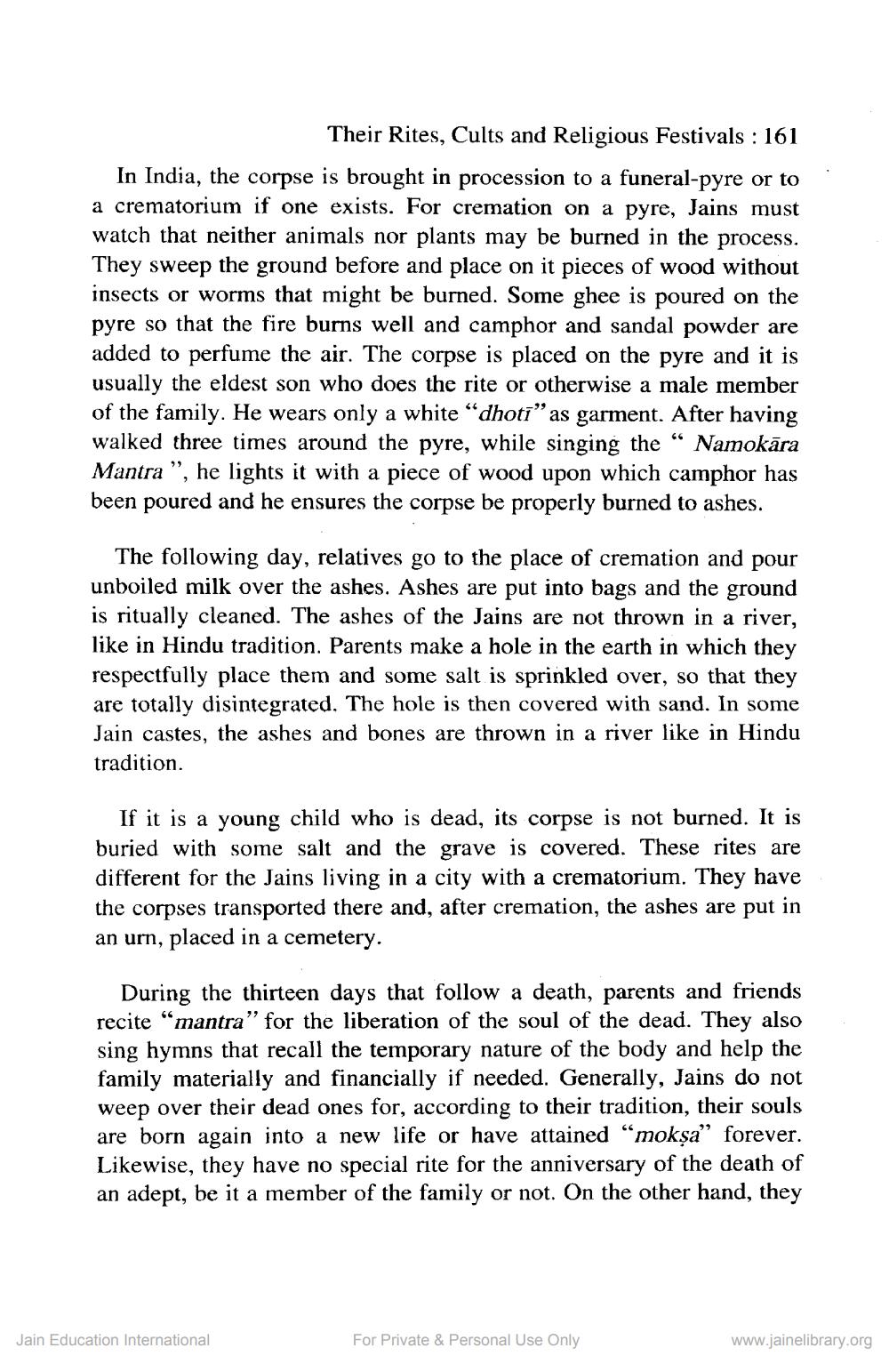________________
Their Rites, Cults and Religious Festivals : 161 In India, the corpse is brought in procession to a funeral-pyre or to a crematorium if one exists. For cremation on a pyre, Jains must watch that neither animals nor plants may be burned in the process. They sweep the ground before and place on it pieces of wood without insects or worms that might be burned. Some ghee is poured on the pyre so that the fire burns well and camphor and sandal powder are added to perfume the air. The corpse is placed on the pyre and it is usually the eldest son who does the rite or otherwise a male member of the family. He wears only a white “dhotī” as garment. After having walked three times around the pyre, while singing the “ Namokāra Mantra ”, he lights it with a piece of wood upon which camphor has been poured and he ensures the corpse be properly burned to ashes.
The following day, relatives go to the place of cremation and pour unboiled milk over the ashes. Ashes are put into bags and the ground is ritually cleaned. The ashes of the Jains are not thrown in a river, like in Hindu tradition. Parents make a hole in the earth in which they respectfully place them and some salt is sprinkled over, so that they are totally disintegrated. The hole is then covered with sand. In some Jain castes, the ashes and bones are thrown in a river like in Hindu tradition.
If it is a young child who is dead, its corpse is not burned. It is buried with some salt and the grave is covered. These rites are different for the Jains living in a city with a crematorium. They have the corpses transported there and, after cremation, the ashes are put in an urn, placed in a cemetery.
During the thirteen days that follow a death, parents and friends recite “mantra" for the liberation of the soul of the dead. They also sing hymns that recall the temporary nature of the body and help the family materially and financially if needed. Generally, Jains do not weep over their dead ones for, according to their tradition, their souls are born again into a new life or have attained “mokşa” forever. Likewise, they have no special rite for the anniversary of the death of an adept, be it a member of the family or not. On the other hand, they
Jain Education International
For Private & Personal Use Only
www.jainelibrary.org




